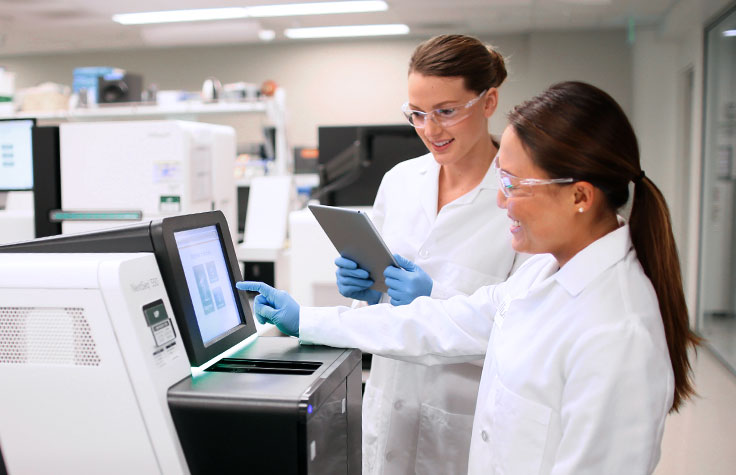
Illumina finished the fourth quarter of 2020 with a 7.5% year-over-year gain in net income, despite revenues staying all but flat from the year-ago quarter.
The sequencing giant reported fourth-quarter net income of $257 million or $1.75 a share, compared with $239 million or $1.61 a share a year ago. Revenues rose just $0.5 million year-over-year from Q4 2019, to $953 million—well above Wall Street forecasts for $876 million.
Those results limited the year-over-year drop Illumina’s net income for all of 2020 to 34.5%, with the company reporting $656 million compared with $1.002 billion in 2019. Revenues fell by 9% last year to $3.239 billion from $3.543 billion.
“Illumina delivered a strong finish to 2020 with record fourth quarter revenue exceeding our expectations,” Illumina CEO Francis deSouza said in a statement. “We also had record orders in the quarter, including record sequencing instrument orders and the second highest quarter for NovaSeq instrument orders. Our business delivered strong sequential growth in the second half of 2020 and we expect continued recovery from the pandemic in 2021.”
Illumina also issued guidance to investors projecting year-over-year revenue growth in the range of 17% to 20%, or between $3.79 billion and $3.86 billion, and earnings per diluted share of $4.76 to $5.01 (GAAP), or $5.10 to $5.35 (non-GAAP).
That range was lower than the up-to-$5.80 per share forecast of a consensus of Wall Street firms, and the overall guidance excluded the potential impact from Illumina’s pending $8 billion acquisition of cancer blood test developer GRAIL—a deal the company expects to close in the second half this year.
Those factors appeared to explain why shares of Illumina dipped less than 1% in before-hours trading as of 9:10 a.m., to $446.80, down from yesterday’s closing price of $451.22, itself a gain of just 0.27% from Wednesday.
“Conservative” Guidance
Puneet Souda, managing director, life sciences tools at SVB Leerink, wrote in a research note that Illumina’s guidance “appears conservative to us” given five factors:
- Easy comparisons expected neat year since 2020 was impacted by the COVID-19 pandemic.
- Elasticity of demand that is playing out exactly as Illumina expected given its pricing reductions, to $600 per genome cost, implemented in the fourth quarter.
- Clinical volumes rising as Medicare patients return back to clinics for tests;
- Research and applied lab volumes growing above pre-pandemic levels;
- Instrument purchases and order book remaining strong; and
- Several upcoming smaller drivers including COVID surveillance gaining attention, MRD volumes expected to scale, cancer screening trials ramping, and China recovery continuing.
Souda also noted that Illumina may launch a new product at a global virtual customer event in April that the company is planning to hold, based on a statement by deSouza during the fourth-quarter earnings conference call with analysts where he indicated a desire to launch new products in front of customers.
“Though it is hard to assess the potential product launch, a high-throughput instrument launch is likely to be viewed meaningfully given the multi-year growth that it normally drives for ILMN,” Souda wrote.
Based on the prospect of a new launch plus the other factors, Souda has increased SVB Leerink’s 12-month price target (PT) for Illumina 31%.
“Our PT moves to $470 (from $360), still reflecting a large and somewhat unbounded market for sequencing as the majority of the population in the world is likely to be touched by one or more genetic tests in their lifetime, benefiting ILMN the most among the group,” Souda added.
Illumina reported R&D expenses for the fourth quarter of $200 million, up 24% from $161 million in Q4 2019. Non-GAAP R&D expenses as a percentage of revenue were 20.9% compared to 16.8% a year earlier. For all of 2020, R&D expenses were $682 million compared to $647 million in 2019. Excluding expenses and income related to COVID-19, non-GAAP R&D expenses as a percentage of revenue were 21.0% in 2020 compared to 18.2% the previous year.













